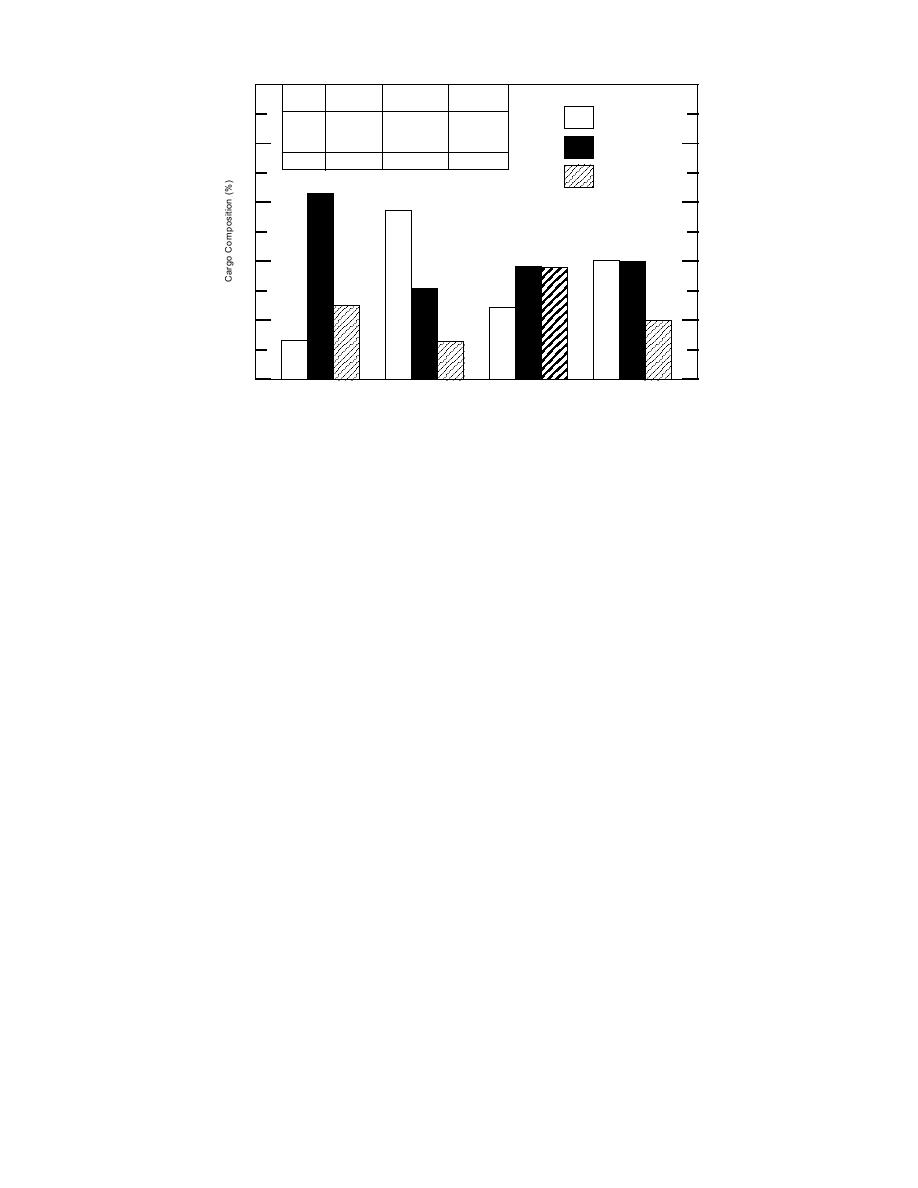
100
Liquid cargo
Dry bulk cargo
General cargo
Category
(%)
(%)
(%)
Liquid
Export
57.0
30.5
12.5
Import
12.5
62.9
24.6
80
Cabotage
24.1
38.4
37.5
Dry Bulk
Total
40.3
39.9
19.8
General
60
40
20
0
Import
Export
Cabotage
Total
Trade Category
Figure 12. Russia's trade composition percentages for 1992 (from Peters 1993).
The continental shelf is extremely wide off
(21%), and coal (15.3%). More than 50% of cabo-
Russia's north coast (Fig. 13), and the seas overly-
tage dry bulk was coal. In the past three years,
ing it are shallow. In general, the winter distribu-
liquid exports and imports have fallen off by 10%
tion of sea ice across the Russian Arctic is charac-
and 15%, respectively, while dry bulk cargoes have
terized by the growth of shorefast ice in vast areas
increased by similar proportions. Cabotage car-
where the water is less than 30 m deep. Calcula-
goes were relatively unchanged in composition.
tions based on climatic conditions show that the
Although the near-term outlook for Russia's sea
maximum ice thickness averages 120 to 130 cm in
trade shows reasonable stability now after a 30%
the Kara Gate, 160 to 170 cm near Dikson and in
drop between 1988 and 1992, it is expected to grow
the Longa Strait, and 190 to 200 cm in the straits of
as privatization in the industry matures. Peters
Vil'kitskogo and Dmitriya Lapteva. These mean
(1993) predicts that an improving economy, politi-
values can vary by 30 to 50 cm depending on year-
cal stabilization, industrial recovery, and expected
to-year conditions. The presence of snow has a
full convertibility of the ruble should help interna-
large effect on the fast-ice thickness, because it
tional water trade grow by 4.5% annually by 1996.
acts as an insulating blanket over the growing ice
He also projects an annual growth rate in cabotage
and reduces its thickness.
of 3.5%.
Seaward of the fast-ice boundary, the ice cover
is in constant motion due to ocean currents and
winds. This region of moving ice, known as "pack
THE PHYSICAL SETTING
ice," continually experiences openings, called
leads, where the ice cover pulls apart, and conver-
In this section we summarize general informa-
gence areas, where the ice crushes together to form
tion on the physical environment in the Russian
pressure ridges and fields of broken rubble. Re-
and Alaskan Arctic regions, according to the vari-
current open water in specific locations due to pre-
ous seas progressing from west to east. The infor-
vailing winds and currents are known as "polyn-
mation was derived from Brigham and Voelker
yas" (Fig. 14). During the freezing period (roughly
(1985), Barnett (1991), Vefsnmo et al. (1991),
August to May), new ice is continually being pro-
Batskikh and Mikhailichenko (1993), and RSMOT
duced in the leads, and these areas of thinner ice
(in prep.). For more detailed information, the
and the polynyas are obvious lines of weakness
reader is referred to the research of climatological
that are exploited to maximum extent by ice pilots
conditions conducted for the U.S. Army Corps of
and sea captains. Figure 15 shows the general dis-
Engineers NSR Reconnaissance Study (Proshutin-
tribution of various ice types across the Arctic Ba-
sky et al. 1995)
21



 Previous Page
Previous Page
